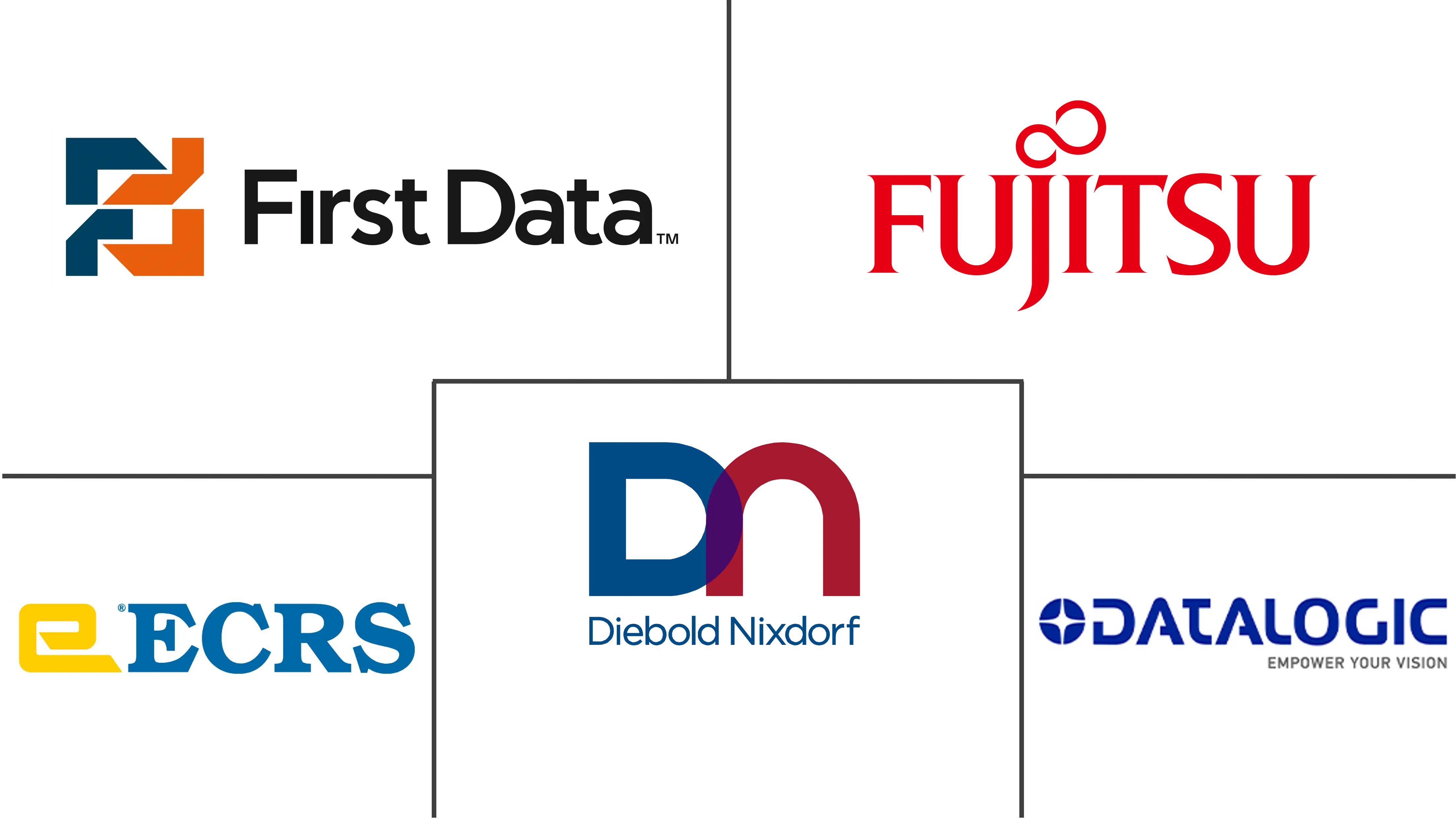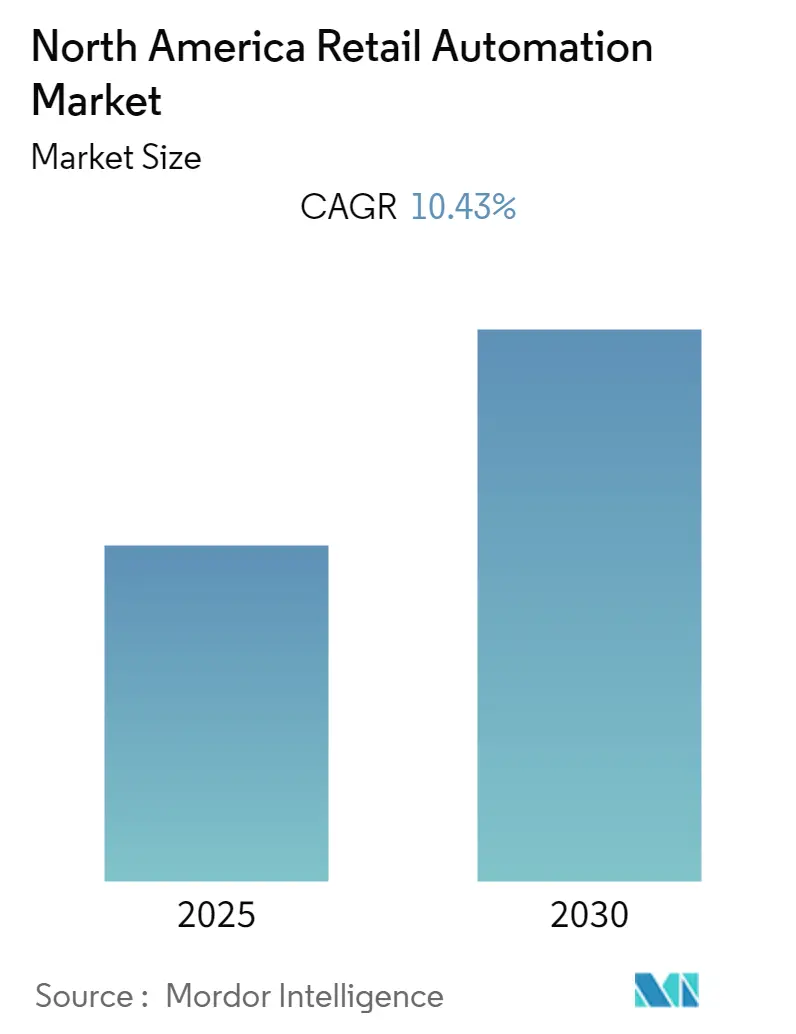
North America Retail Automation Market Analysis by Mordor Intelligence
The North America Retail Automation Market is expected to register a CAGR of 10.43% during the forecast period.
- The COVID-19 pandemic created huge disruption in the retail industry and forced retailers to take various preventive measures, leading to the closure of several outlets. Owing to this, retailers and prominent brands across the globe faced short-term challenges across sustained revenues, health and safety, supply chain management, labor shortages, and pricing, to name a few.
- Automation is anticipated to play a major part in the growth of the retail industry; as the industry expands, automation helps retailers cut costs and drive efficiency. These solutions also enhance the customer experience and the efficiency of retail facility employees.
- Retailers are facing challenges as the technological revolution is taking place significantly. These innovations are reshaping the behavior of consumers and their way of collaborating and communicating with each other to select products and services.
- Also, as e-commerce is experiencing steady growth and relocating customers away from retail stores, a new in-store experience must be unique online for the brick & mortar stores to stay relevant. Moreover, digital transformation is helping the supply chain by making data-driven decisions and enhancing the customer experience. Also, players are moving toward iot to enable frictionless retail.
- A study conducted by Zebra Technologies on the anticipated future trends in the retail sector revealed that around 60% of retailers are expected to adopt automation across all the key functions. The study further indicated that around 78% of the respondents would veer towards using kiosks to provide product-related information to their clients.
- Buoyed by the introduction of Amazon Go in the United States, several retailers are now exploring using automation to reduce operational costs and provide a seamless shopping experience to their shoppers. Amazon's entry into physical retail is also seen as a challenge for traditional stores as they now have to compete with established players with a strong distribution channel.
North America Retail Automation Market Trends and Insights
Grocery Segment is expected grow at a higher pace.
- Self-checkout kiosks have been among the standard automation solutions increasingly being deployed in supermarkets. Also, grocery chain Kroger uses sensors and predictive analytics to forecast when more cashiers will be needed in its stores.
- The impact of COVID-19 on the region's retail industry resulted in Target, Taco Bell, Hy-Vee supermarkets, and Speedway convenience stores supporting Apple Pay, a contactless payment system enabling customers to quickly and securely pay in stores using their Apple Watch and iPhone.
- Also, when the first Amazon Go store was opened to the public, shoppers could walk into the store, grab whatever they liked, put it in bags, and walk out. The customers only required an app to shop. Amazon also plans to open more than 3,000 cashier-less stores in the future. The grocery sector has long tried to solve the friction of the checkout experience. From opening more registers to adopting self-service kiosks, no solutions have yet to satisfy the retailer and the customer entirely.
- Moreover, Zippin, an Amazon Go rival store in San Francisco, also has a cashier-less system that uses multiple sources of information, both cameras and shelf sensors, to triangulate and receive the correct information. Multiple retailers are anticipated to find checkout-free systems to be their answer to increased profits, including, but not limited to, fewer employees behind the register, reduction in theft by fraud, and new customer data.
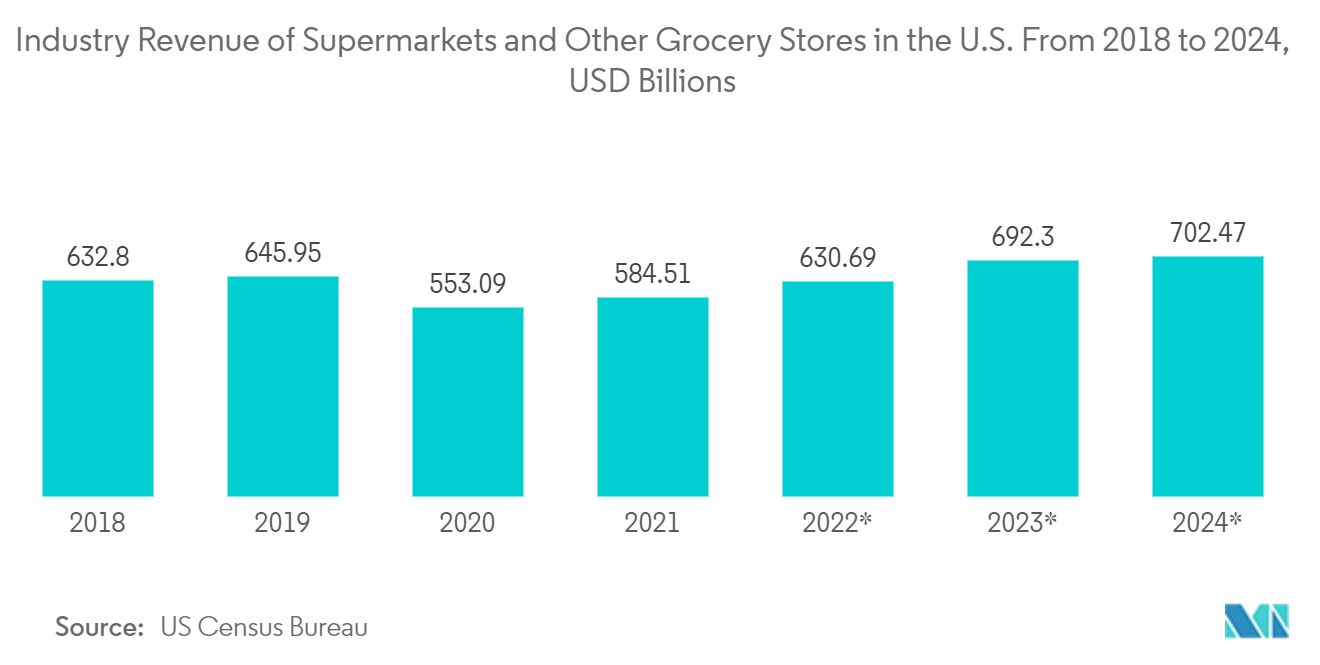
United States is Expected to Hold a Major Market Share
- The retail automation market in the United States is anticipated to be driven by the growing adoption of automation technologies by major players such as Amazon and Walmart.
- Part of the adoption is significantly attributable to the changing consumer preferences. A Digimarc study reported that 88% of American adults prioritize faster checkout options over slower checkout speeds and long lines. Major regional retailers have focused on such complaints and adapted to a quick and easy checkout process.
- Retailers have implemented single or multiple payment solutions to decrease the time required to complete transactions. Also, by equipping sales associates with mobile point of sale (mPOS) devices, the time taken to process payments and the location of the payment processing eliminated the need for many traditional POS stations, thus, freeing up valuable real estate.
- For instance, Rebecca Minkoff's SoHo store deploys mPOS devices as self-checkout stations; customers who wish to own their shopping journey from start to finish can process transactions without the assistance of store personnel.
- Retailers in the region have recognized the need to incentivize digital payments and, thus, are offering more tangible benefits in the mind of the consumer, such as loyalty benefits. The technology has been better integrated with several apps and mobile commerce sites to create a more seamless experience.
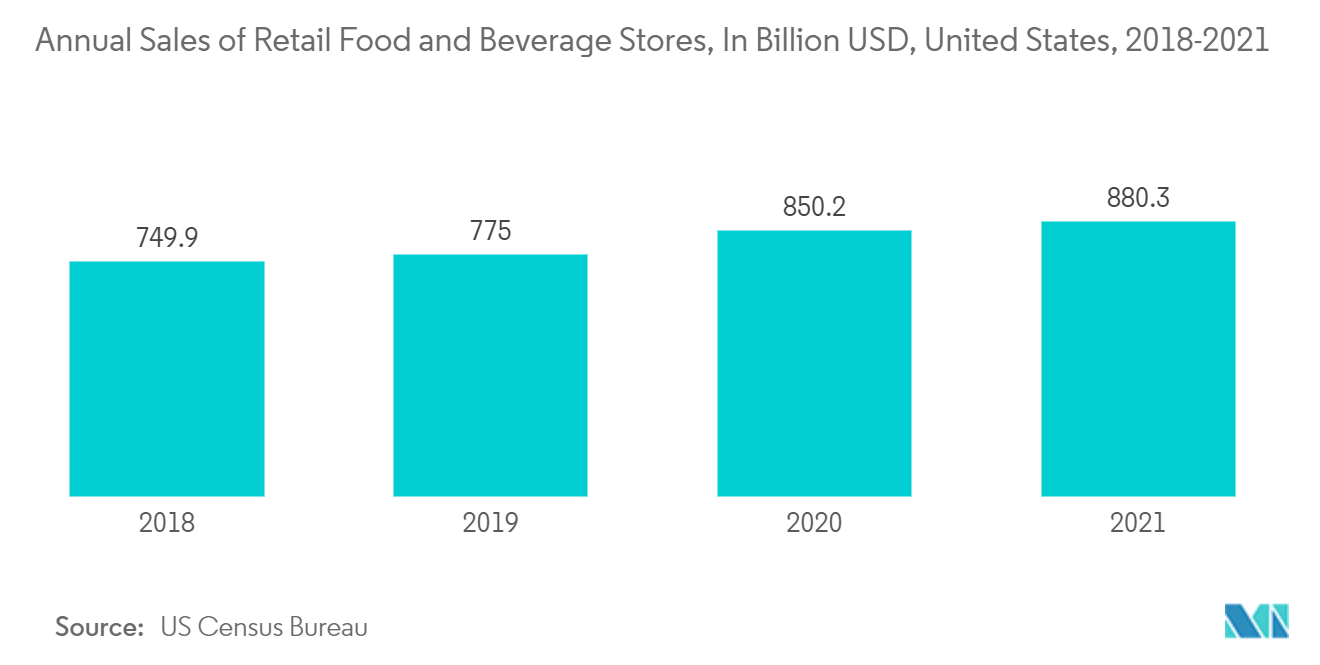
Competitive Landscape
The North American Retail Automation Market is significantly competitive, owing to multiple players operating. The market is moderately concentrated, with significant players adopting strategies such as product innovation, mergers, and acquisitions to expand their reach and offer better products. Some major players operating in the market are Diebold Nixdorf Inc., ECR Software Corporation, First Data Corporation, and Fujitsu Limited.
In July 2023, Simbe Robotics, Inc., the company leveraging AI and robotics to elevate the performance of retailers with real-time insights into inventory and operations, today announced a Series B equity financing round of USD 28 million, led by Eclipse. As one of the premier venture firms specializing in the digital transformation of essential physical industries that impact daily life, Eclipse brings invaluable knowledge and expertise to propel Simbe through its next growth phase.
In June 2023, Canadian Tire Corporation (CTC) and Microsoft announced a flagship strategic retail partnership to drive innovation across Canada's retail industry and contribute to the country's overall advancement and adoption of new technology. Through this seven-year partnership, CTC will leverage Microsoft Azure to modernize its systems and infrastructure and utilize direct access to Microsoft's trusted cloud products and solutions, expertise, and upskilling capabilities. CTC will use these new abilities to increase the speed and efficiency of its business modernization, enhancing customers' omnichannel journey and brand experiences across its group of companies.
North America Retail Automation Industry Leaders
Datalogic SpA
Diebold Nixdorf Incorporated
ECR Software Corporation
First Data Corporation
Fujitsu Limited
- *Disclaimer: Major Players sorted in no particular order
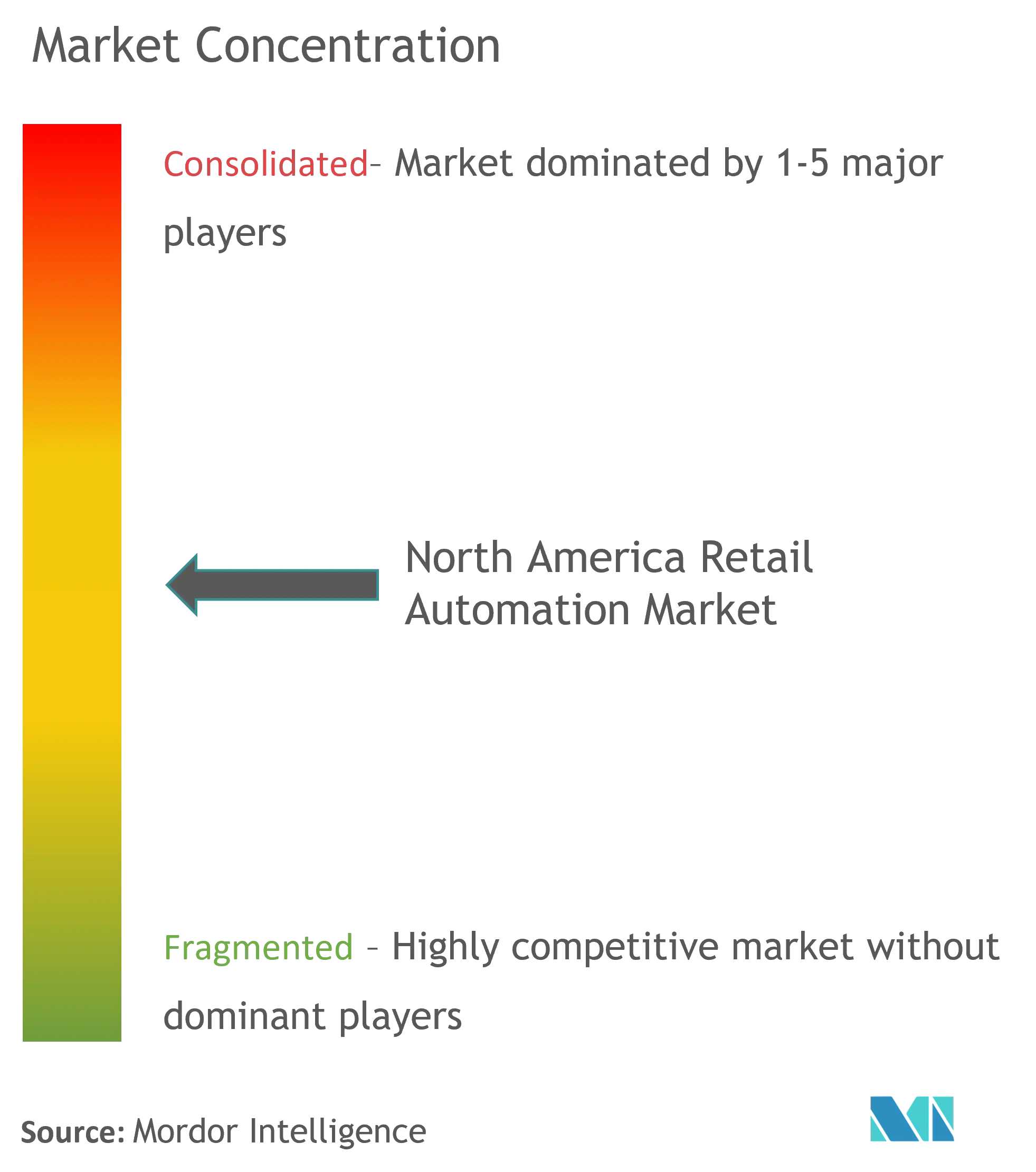
Recent Industry Developments
- In April 2023, Walmart Inc. plans to automate two-thirds of its stores by the end of 2026 to improve inventory accuracy and flow, reduce costs, and enhance the overall shopping experience. The move is part of the organization’s strategy to reengineer its supply chain and make a more intelligent and connected omnichannel network to meet customers’ needs better. This involves a more significant use of data, intelligent software, and automation.
- In February 2023, Grocery wholesaler firm United Natural Foods Inc. (UNFI) forged an agreement with retail trades solutions provider ECRS that will allow users of ECRS’ CATAPULT point-of-sale medium to leverage UNFI’s Professional Services suite that contains digital coupons, third-party delivery services, and electronic payments. The contract provides for a direct and formal working connection, particularly around electronic data interchange (EDI) capabilities, and authorizes UNFI field associates through ECRS retail automation technology training,
North America Retail Automation Market Report Scope
Retail automation significantly empowers brands with better data, increased operational efficiency, and cost savings. These solutions can reduce busy work and error-prone manual tasks, enabling staff to focus on impactful business decisions. The market is segmented by components, and end-users are increasingly adopting automation solutions to increase regional efficiency.
The North America Retail Automation Market is segmented by Component (Hardware, Software), End-User (Grocery, General Merchandise, Hospitality), and Country.
The market sizes and forecasts are provided in terms of value (USD) for all the above segments.
| Hardware |
| Software |
| Grocery (Supermarkets, Hypermarkets, Convenience Stores, and Drugstores) |
| General Merchandise (Hardgoods, Softgoods, Mixed General Merchandise) |
| Hospitality (Hotels (including Casinos, Resorts, Cruise Ships, etc.) and Restaurants) |
| United States |
| Canada |
| By Component | Hardware |
| Software | |
| By End-User | Grocery (Supermarkets, Hypermarkets, Convenience Stores, and Drugstores) |
| General Merchandise (Hardgoods, Softgoods, Mixed General Merchandise) | |
| Hospitality (Hotels (including Casinos, Resorts, Cruise Ships, etc.) and Restaurants) | |
| By Country | United States |
| Canada |
Key Questions Answered in the Report
What is the current North America Retail Automation Market size?
The North America Retail Automation Market is projected to register a CAGR of 10.43% during the forecast period (2025-2030)
Who are the key players in North America Retail Automation Market?
Datalogic SpA, Diebold Nixdorf Incorporated, ECR Software Corporation, First Data Corporation and Fujitsu Limited are the major companies operating in the North America Retail Automation Market.
What years does this North America Retail Automation Market cover?
The report covers the North America Retail Automation Market historical market size for years: 2019, 2020, 2021, 2022, 2023 and 2024. The report also forecasts the North America Retail Automation Market size for years: 2025, 2026, 2027, 2028, 2029 and 2030.
Page last updated on:
North America Retail Automation Market Report
Statistics for the 2025 North America Retail Automation market share, size and revenue growth rate, created by Mordor Intelligence™ Industry Reports. North America Retail Automation analysis includes a market forecast outlook for 2025 to 2030 and historical overview. Get a sample of this industry analysis as a free report PDF download.
